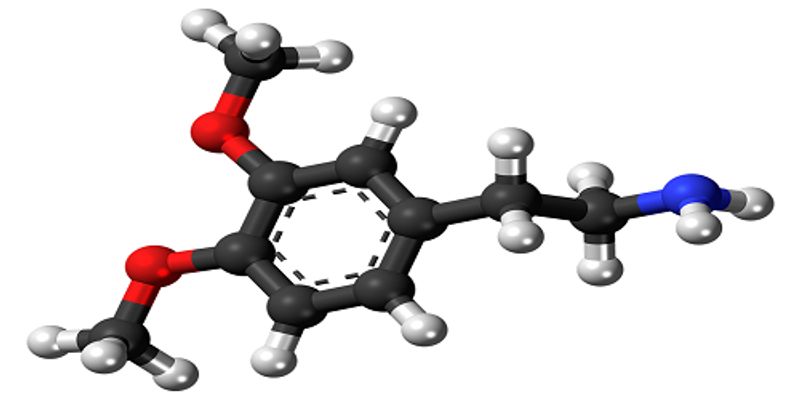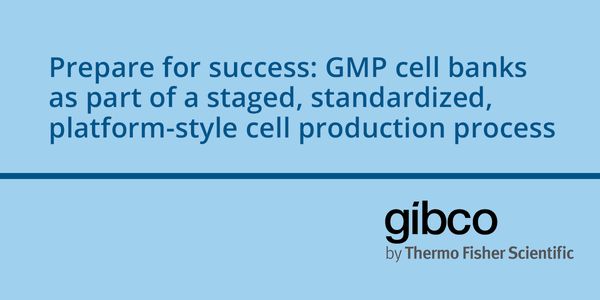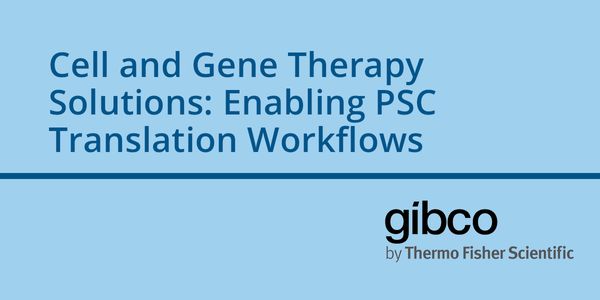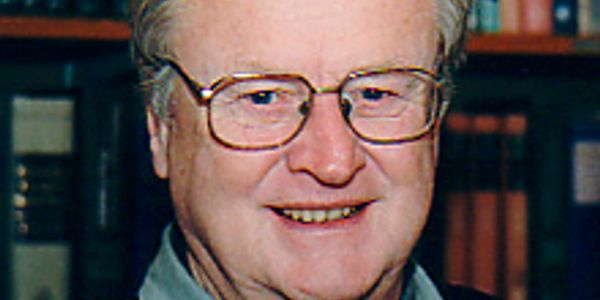Dopamine
Dopamine is a neurotransmitter, one of those chemicals that is responsible for transmitting signals in between the nerve cells (neurons) of the brain. Very few neurons actually make dopamine. Some, in a part of the brain called the substantia nigra, are the cells that die during Parkinsons disease. The functions of others, located in a part of the brain called the ventral tegmental area (VTA), are less well defined and are the major source of the aforementioned controversy (and the focus of this post). When dopamine neurons become activated, they release dopamine.
-
FEB 22, 2023 | 5:30 AMIn this project, we optimized a high-throughput fluorescent-based assay to assess transporter activity by measuring uptake of the substrate, ASP+ 4-(4-(dimethylamino)styryl)-N-methylpyridi...Speaker: Rheaclare Fraser-Spears, PhDPresented at: Drug Discovery & Development Virtual Event Series 2023
MAR 10, 2022 | 7:30 AMNanoString has started an ambitious project called the "Spatial Organ Atlas." The goal of this initiative is to map the architecture of tissues with spatially resolved whole transc...Speaker: Alison VanSchoiack, PhDAUG 06, 2020 | 12:00 AMUnique physical, chemical, and optical phenomena arise when materials are confined to the nanoscale. We are accustomed to making observations for the behavior of living systems on a macrosco...MAR 11, 2020 | 3:00 PMWorking memory (the ability to hold some information in mind for a few seconds, and to manipulate that information) and decision-making (committing to one out of multiple possible choices) a...Speaker: Carlos Brody, PhD , Ben Engelhard, PhD , Stephen Keeley, PhD , Marlies Oostland, PhD , Lucas Pinto, MD, PhD , Adrian Wanner, PhD , Ilana Witten, PhDPresented at: Neuroscience Virtual Event Series 2020
MAR 11, 2020 | 1:30 PMLearning is often an emotional process. Emotional stimuli with different valences, such as threat and reward, can transform an otherwise neutral sensory input into one that can trigger disti...MAR 11, 2020 | 6:00 AMWe present here a framework to generate a realistic multiscale circuit model of the larval zebrafish brain – the multiscale virtual fish (MVF). The model will be based on algorithms in...Speaker: Florian Engert, PhD , Jeff Lichtman, MD, PhD , Haim SompolinskyPresented at: Neuroscience Virtual Event Series 2020
JAN 01, 2020 | 6:00 AMStriatal neuromodulation through G-protein-coupled receptors (GPCRs) regulates complex voluntary motor actions, involving decision-making, learning, and action selection. The dorsal striatum...JAN 01, 2020 | 6:00 AMThe dopamine D4 receptor (D4R) is enriched in the prefrontal cortex where it plays important roles in cognition, attention, decision making and executive function. Novel D4R-selective ligand...FEB 27, 2019 | 8:00 AMDATE: February 27, 2019TIME: 8:00am PST Pluripotent stem cells (PSCs) can form any tissue or cell in the body, and are the ideal starting material to manufacture...DEC 06, 2018 | 9:00 AMDATE: December 6, 2018TIME: 9:00am PST, 12:00pm EST Induced pluripotent stem cells (iPSC) intended for translational applications need to be of...MAR 15, 2017 | 9:00 AMThe idea of schizophrenia typically conjures up images of people who hear voices, see visions and have delusional beliefs. However, clinicians have long recognized cognitive dysfunction as on...MAR 15, 2017 | 7:30 AMParkinson’s disease (PD) is characterized by the loss of dopamine and the disruption of brain circuits (basal ganglia and cortex) that are responsible for normal cognitive and motor per...MAR 15, 2017 | 7:30 AMOur decisions are governed by a balance between prospective instrumental goal-oriented and retrospective habitual learning strategies. This arbitration is relevant dimensionally across psychi...NOV 17, 2016 | 7:00 AMDATE: November 17, 2016 TIME: 7:00am PT, 10:00am ET Induced pluripotent stem (iPS) cell reprogramming allows turning an adult somatic cell into a pluripotent stem cell. Four Fac...AUG 30, 2016 | 8:00 AMMost discussions about pluripotent stem cells center around their promise for regenerative medicine. The most remarkable quality of these cells is their ability to turn into all of the ...AUG 30, 2016 | 8:00 AMA major challenge for the clinical application of pluripotent stem cell therapy for neurodegenerative diseases is large-scale manufacturing and cryopreservation of neurons and glia that can b...MAR 17, 2016 | 12:00 PMSchizophrenia, depression, bipolar disorder are all uniquely human conditions. Psychiatric conditions include alterations in several different and overlapping domains (NIMH RDoC). Each...MAR 17, 2016 | 6:00 AMIn this presentation, Arvid Carlsson, who was awarded the Nobel prize in 2000 for his discovery of the transmitter role of dopamine, will be interviewed by Elias Eriksson. The following aspec...MAR 16, 2016 | 1:30 PMImpulse control disorders (ICDs), also known as behavioural addictions, are common in the general population and can have marked consequences. ICDs can also commonly occur with exposure...MAR 16, 2016 | 12:00 PMTraditional models of basal ganglia disorders are grounded in the assumption that network dysfunction is driven by alterations in intrinsic excitability of striatal neurons. Recent work has c...MAR 16, 2016 | 9:00 AMWe routinely face decisions requiring evaluation and choice of different actions may or may not yield different types of rewards. These situations trigger competitive decision biases that ref...DEC 08, 2015 | 8:00 AMDecember 8th, 2015 8:00 am PT, 10:00 am CT Cryopreservation of post-mitotic, induced pluripotent stem cell-derived midbrain lineage dopamine neurons (iPSC-mDA) is a significant advan...MAR 19, 2015 | 10:30 AMSince the discovery and maturing of in vitro techniques that characterized neurotransmitter receptor systems in animal and human brain and subsequent development of in vitro and in vivo autor...MAR 19, 2015 | 7:30 AMTraditional psychiatric textbooks describe schizophrenia as a clinical enigma of unknown aetiology. However, this is no longer true. We now know a great deal about the risk factors, or contr...
FEB 22, 2023 | 5:30 AM
In this project, we optimized a high-throughput fluorescent-based assay to assess transporter activity by measuring uptake of the substrate, ASP+ 4-(4-(dimethylamino)styryl)-N-methylpyridi...
Speaker:
Rheaclare Fraser-Spears, PhD
Presented at: Drug Discovery & Development Virtual Event Series 2023
MAR 10, 2022 | 7:30 AM
NanoString has started an ambitious project called the "Spatial Organ Atlas." The goal of this initiative is to map the architecture of tissues with spatially resolved whole transc...
Speaker:
Alison VanSchoiack, PhD
AUG 06, 2020 | 12:00 AM
Unique physical, chemical, and optical phenomena arise when materials are confined to the nanoscale. We are accustomed to making observations for the behavior of living systems on a macrosco...
MAR 11, 2020 | 3:00 PM
Working memory (the ability to hold some information in mind for a few seconds, and to manipulate that information) and decision-making (committing to one out of multiple possible choices) a...
Speaker:
Carlos Brody, PhD
, Ben Engelhard, PhD
, Stephen Keeley, PhD
, Marlies Oostland, PhD
, Lucas Pinto, MD, PhD
, Adrian Wanner, PhD
, Ilana Witten, PhD
Presented at: Neuroscience Virtual Event Series 2020
MAR 11, 2020 | 1:30 PM
Learning is often an emotional process. Emotional stimuli with different valences, such as threat and reward, can transform an otherwise neutral sensory input into one that can trigger disti...
MAR 11, 2020 | 6:00 AM
We present here a framework to generate a realistic multiscale circuit model of the larval zebrafish brain – the multiscale virtual fish (MVF). The model will be based on algorithms in...
Speaker:
Florian Engert, PhD
, Jeff Lichtman, MD, PhD
, Haim Sompolinsky
Presented at: Neuroscience Virtual Event Series 2020
JAN 01, 2020 | 6:00 AM
Striatal neuromodulation through G-protein-coupled receptors (GPCRs) regulates complex voluntary motor actions, involving decision-making, learning, and action selection. The dorsal striatum...
JAN 01, 2020 | 6:00 AM
The dopamine D4 receptor (D4R) is enriched in the prefrontal cortex where it plays important roles in cognition, attention, decision making and executive function. Novel D4R-selective ligand...
FEB 27, 2019 | 8:00 AM
DATE: February 27, 2019TIME: 8:00am PST Pluripotent stem cells (PSCs) can form any tissue or cell in the body, and are the ideal starting material to manufacture...
DEC 06, 2018 | 9:00 AM
DATE: December 6, 2018TIME: 9:00am PST, 12:00pm EST Induced pluripotent stem cells (iPSC) intended for translational applications need to be of...
MAR 15, 2017 | 9:00 AM
The idea of schizophrenia typically conjures up images of people who hear voices, see visions and have delusional beliefs. However, clinicians have long recognized cognitive dysfunction as on...
MAR 15, 2017 | 7:30 AM
Parkinson’s disease (PD) is characterized by the loss of dopamine and the disruption of brain circuits (basal ganglia and cortex) that are responsible for normal cognitive and motor per...
MAR 15, 2017 | 7:30 AM
Our decisions are governed by a balance between prospective instrumental goal-oriented and retrospective habitual learning strategies. This arbitration is relevant dimensionally across psychi...
NOV 17, 2016 | 7:00 AM
DATE: November 17, 2016
TIME: 7:00am PT, 10:00am ET
Induced pluripotent stem (iPS) cell reprogramming allows turning an adult somatic cell into a pluripotent stem cell. Four Fac...
AUG 30, 2016 | 8:00 AM
Most discussions about pluripotent stem cells center around their promise for regenerative medicine. The most remarkable quality of these cells is their ability to turn into all of the ...
AUG 30, 2016 | 8:00 AM
A major challenge for the clinical application of pluripotent stem cell therapy for neurodegenerative diseases is large-scale manufacturing and cryopreservation of neurons and glia that can b...
MAR 17, 2016 | 12:00 PM
Schizophrenia, depression, bipolar disorder are all uniquely human conditions. Psychiatric conditions include alterations in several different and overlapping domains (NIMH RDoC). Each...
MAR 17, 2016 | 6:00 AM
In this presentation, Arvid Carlsson, who was awarded the Nobel prize in 2000 for his discovery of the transmitter role of dopamine, will be interviewed by Elias Eriksson. The following aspec...
MAR 16, 2016 | 1:30 PM
Impulse control disorders (ICDs), also known as behavioural addictions, are common in the general population and can have marked consequences. ICDs can also commonly occur with exposure...
MAR 16, 2016 | 12:00 PM
Traditional models of basal ganglia disorders are grounded in the assumption that network dysfunction is driven by alterations in intrinsic excitability of striatal neurons. Recent work has c...
MAR 16, 2016 | 9:00 AM
We routinely face decisions requiring evaluation and choice of different actions may or may not yield different types of rewards. These situations trigger competitive decision biases that ref...
DEC 08, 2015 | 8:00 AM
December 8th, 2015 8:00 am PT, 10:00 am CT
Cryopreservation of post-mitotic, induced pluripotent stem cell-derived midbrain lineage dopamine neurons (iPSC-mDA) is a significant advan...
MAR 19, 2015 | 10:30 AM
Since the discovery and maturing of in vitro techniques that characterized neurotransmitter receptor systems in animal and human brain and subsequent development of in vitro and in vivo autor...
MAR 19, 2015 | 7:30 AM
Traditional psychiatric textbooks describe schizophrenia as a clinical enigma of unknown aetiology. However, this is no longer true. We now know a great deal about the risk factors, or contr...






















